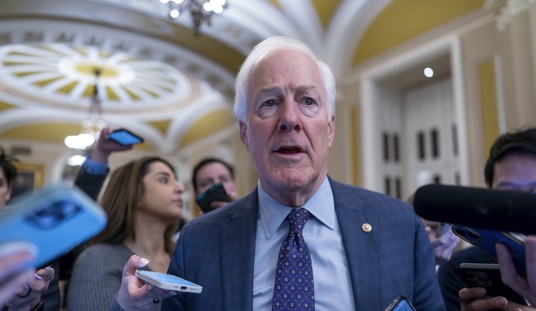Michael Horowitz, the Biden administration’s former lead official for rapidly fielding emerging capabilities, told RedState this week that Defense Secretary Pete Hegseth’s acquisition overhaul is both urgently needed and fundamentally non-partisan.
“Accelerating innovation adoption at speed and scale to ensure the American military remains the best in the world, and is prepared to deter or defeat China’s military in particular, is urgent and non-partisan,” Horowitz said.
The rare nod from a former Obama-Biden Pentagon adviser stands in sharp contrast to the persistent attacks levied by ranking Democrats on the Senate and House Armed Services Committees.
Sen. Jack Reed (RI) and Rep. Adam Smith WA-09) have criticized Hegseth’s aggressive push for speed in weapons buying as risky and likely to erode testing rigor, accountability, and workforce stability. Secretary Hegseth, however, is deliberately embracing risk. “We mean to increase acquisition risk in order to decrease operational risk,” he said in his November 7th speech.
Horowitz agrees and has recently authored a brief entitled Time to Accept Risk in Defense Acquisitions. He told Air & Space Forces Magazine that the Pentagon “deserves credit for taking a big swing at trying to address the pathologies at the center of the acquisition process,” adding that the changes are “designed to encourage competition and to encourage speed” in the face of China’s threat and the pace of technological change.
Secretary Hegseth’s bold reforms would cut weapons-buying timelines in half by throwing out 70 percent of the Pentagon’s bloated rulebook. The goal is to get cutting-edge gear like hypersonic missiles, AI systems, and drone swarms into American arsenals years faster than today. The plan sets hard deadlines, including scorecards to track prototypes, initial operational capability, and production ramps within 180 days of implementation, while integrating AI tools to rapidly evaluate bids and prioritize vendors capable of meeting accelerated timelines. This overhaul targets a broken system that allows China to build warships three times faster than the U.S., as American programs languish under mountains of paperwork and compliance hurdles.
SEE ALSO: How Our Elite Troops Bypass Red Tape for New Warfighting Tech
Hegseth Eliminates Generals and Scraps Obsolescent Weapons to Jump Start the 21st Century Army
It’s no surprise that Horowitz backs Hegseth’s push to end that nightmare and put speed first.
As Replicator’s architect, he watched the drone program’s 18–24 month sprint slow to a crawl as Pentagon leaders had to deliver over 40 congressional briefings just to shift 0.05 percent of the budget, a perfect example of the red tape he now wants gone.
He says simply speeding up the old process isn’t enough. Real success, he argues, must be transformative. “Implementing these reforms successfully requires following through on the promise to not just change how we are buying things, but to change what we are buying,” Horowitz said.
The urgency is undeniable. While the U.S. has been trapped in development cycles that last decades, China’s navy has closed the gap, exploding from roughly 230 warships in 2005 to more than 370 today. Beijing’s new destroyers and aircraft carriers are launching at a pace the U.S. shipbuilding industry won’t be able to keep up with.
The Pentagon’s own track record proves why mere tweaks won’t suffice. The Army’s Future Combat Systems program devoured $32 billion before cancellation in 2009, with nothing fielded. The 22-year RAH-66 Comanche program burned roughly $8 billion for two prototypes and was axed in 2004. And the F-35 continues its decades-long march toward a $2 trillion lifetime cost while full capability slips ever further away.
In every case, red tape, requirements creep, and bureaucratic paralysis delivered delay and waste instead of weapons. Horowitz believes Hegseth’s reforms can break that cycle.
Horowitz didn’t respond directly to Democrats on Capitol Hill critical of Hegseth's reforms, but he delivered an indirect rebuke nonetheless: Many of the existing regulations billed as “safeguards” simply protect large legacy contractors and their political supporters, not the troops who need new gear. He was especially direct about the new Portfolio Acquisition Executives (PAEs), which are senior officials Hegseth has empowered to kill failing programs and redirect the money to ones that are actually delivering.
“Frankly, the thing that will make the PAEs successful is if they are able to move on from projects that aren’t working and reallocate funds to projects that are working to get capabilities out faster,” Horowitz said.
In other words: Cancel the duds, pour money into the winners, and establish a new arsenal of freedom fast or watch China pull further ahead.
Editor's Note: Thanks to President Trump and Defense Secretary Pete Hegseth's leadership, the warrior ethos is coming back to America's military.
Help us report on Trump and Hegesth's successes as they make our military great again. Join RedState VIP and use promo code FIGHT to get 60% off your membership.















Join the conversation as a VIP Member